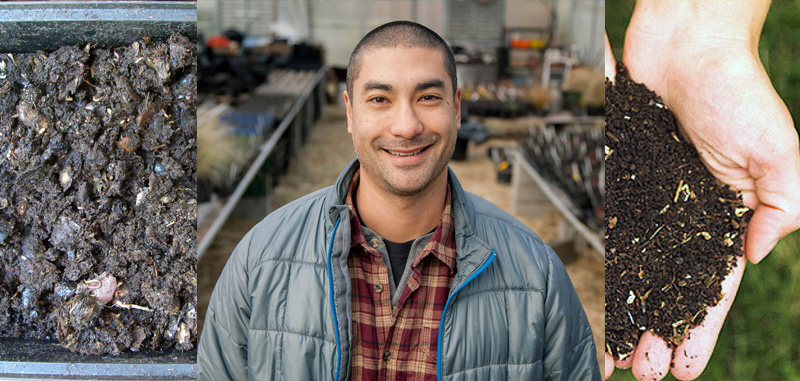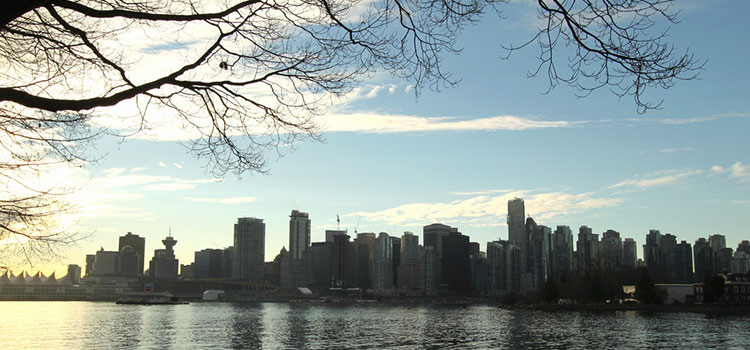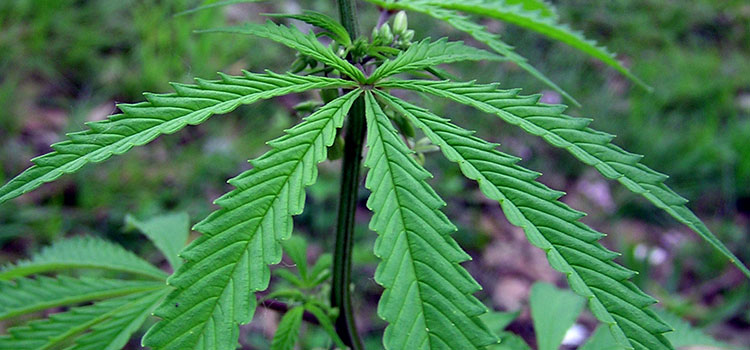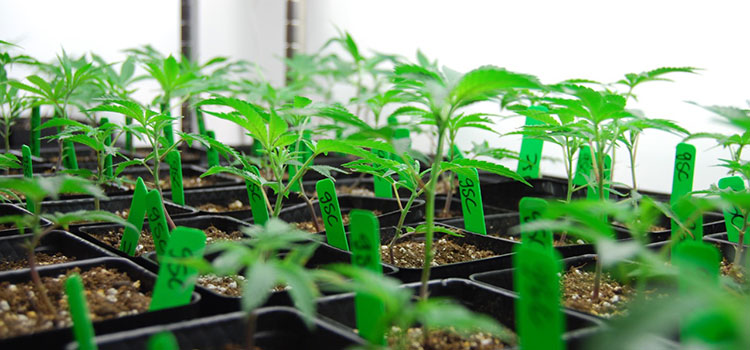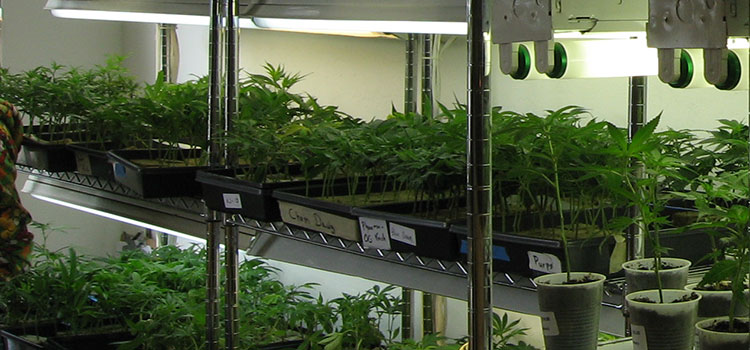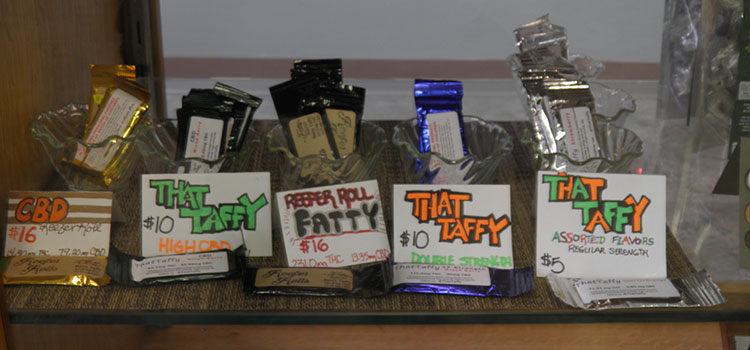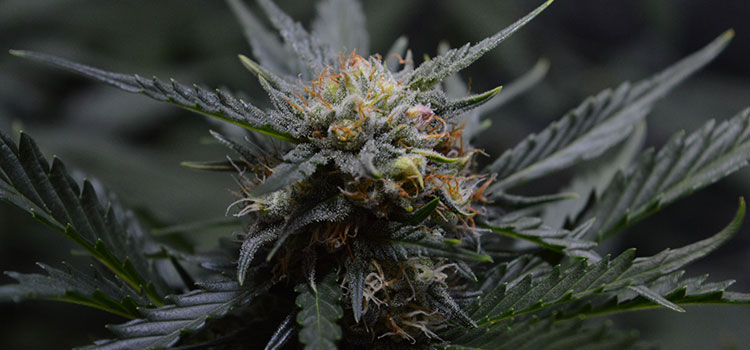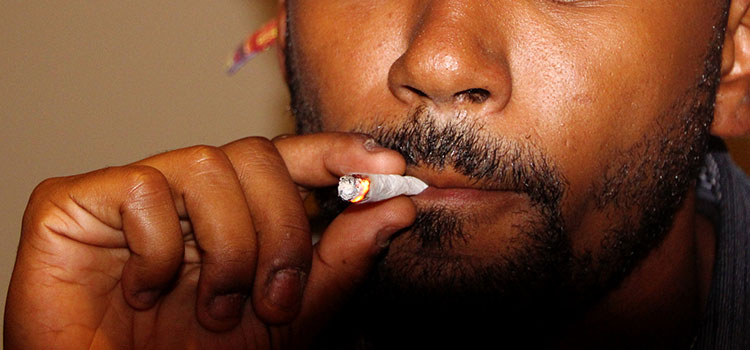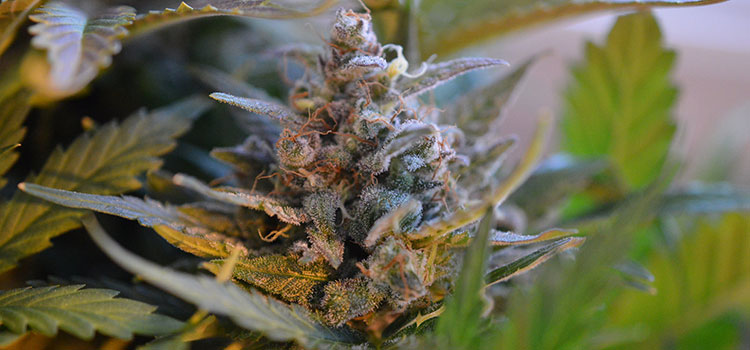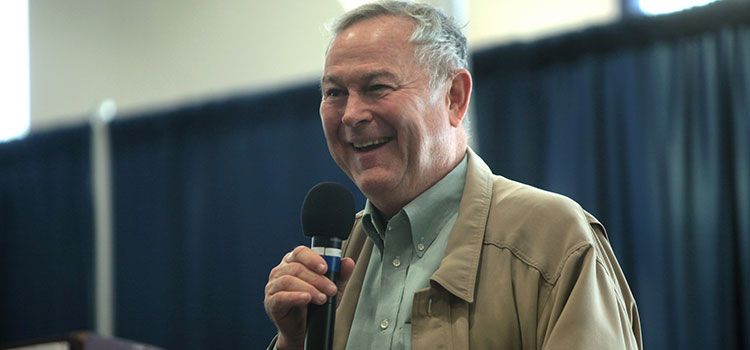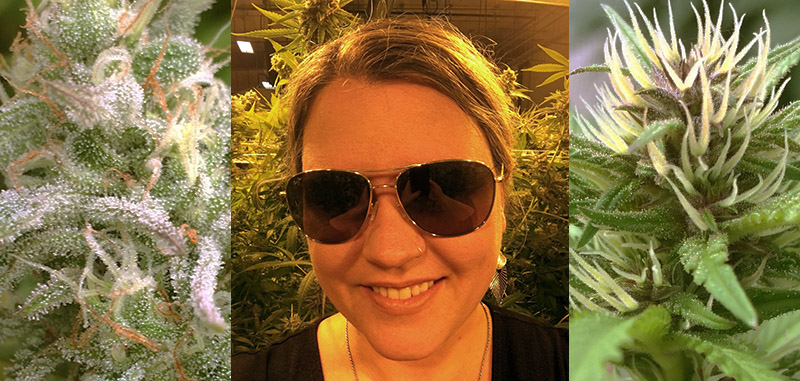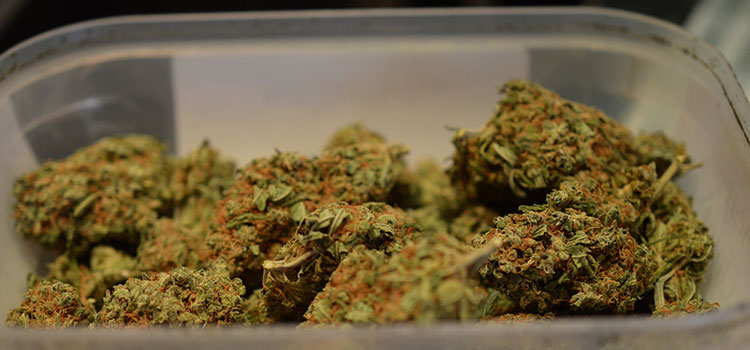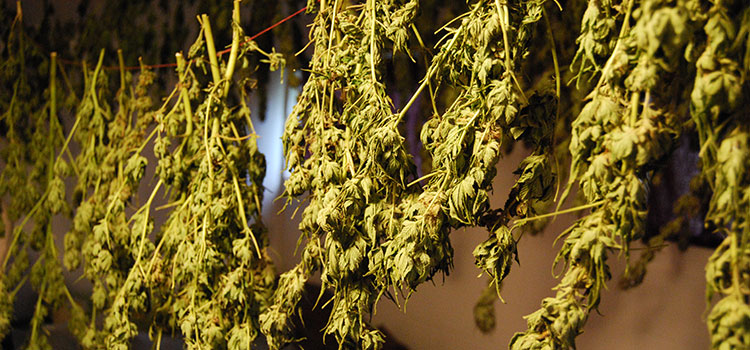Tad Hussey, founder of KIS Organics, recently joined our podcast host Shango Los for the third part of his three-part interview series on probiotic growing techniques. This week, Tad discusses how he uses aerated compost teas to supplement his organic grows. In the interview he discusses how to set up a compost brewer, how to extract nutrients from the compost into the water to use for growing, and what ingredients his personal recipe for a compost tea contains. If you haven’t heard them already, check out Tad’s previous two interviews on building your own soil and taking from nature to craft your own probiotic soil nutrients. Listen to this week’s episode below, or scroll down for the full transcript!
Subscribe to the Ganjapreneur podcast on iTunes, Stitcher, SoundCloud or Google Play.
Listen to the Podcast:
Read the Transcript:
Shango: Hi, there and welcome to the Ganjapreneur.com Podcast. I’m your host, Shango Los. The Ganjapreneur.com Podcast gives us an opportunity to speak directly to entrepreneurs, cannabis growers, product developers and cannabis medicine researchers all focused on making the most of cannabis normalization. As your host, I do my best to bring you original cannabis industry ideas that will ignite your own entrepreneurial spark and give you actionable information to improve your business strategy and improve your health and the health of cannabis patients everywhere.
Today is part three of our three-part series with Tad Hussey of Keep It Simple Organics. Keep It Simple is an edible nursery, production greenhouse, outdoor preschool organic hydro shop and feed store in Washington State. Tad is an educator and a sought-after speaker on probiotic growing. During the first two parts of this series, we talked about wild crafting probiotics for nutrient teas and building soil. Today, we’re going to talk about compost teas. Welcome back to the show, Tad.
Tad: Thanks for having me, Shango.
Shango: I know I sound strange this week. I had contracted a respiratory infection flying down to LA for the Cannabis Entrepreneur Summit last weekend and I’m running a fever, man, so if I pass out, you can just finish the show as a lecture.
Tad: All right. I appreciate you doing this.
Shango: Right on. This show brings us full circle because you may recall that this three-part series started when you and I were talking and I realized that I didn’t understand the difference between nutrient teas and compost teas because I thought they were the same thing. We decided to break up probiotic growing into three shows so that everyone could get up to speed on how to grow using less store bought nutrients. Let’s start from where you and I started. Would you share the difference between nutrient teas and compost teas which is what we’re talking about today?
Tad: Yeah. Just to make the definition a little bit easier, specifically, I want to focus today on aerated compost teas where we’re purposely adding oxygen to select for beneficial aerobic microorganisms, ones that want high oxygen conditions to survive. When we talk about nutrient teas, we’re specifically talking about extracting nutrients out of a plant matter or out of compost, what’s leeching off the bottom of the compost pile, for example, would be considered a nutrient application whereas when we’re making aerated compost teas, we are specifically adding beneficial microorganisms with the purpose of increasing our microbial activity and overall nutrient cycling.
Shango: Is there a particular microbe that we’re going for or is this an entire spectrum of microbes that we’re allowing that to evolve?
Tad: That’s a great question. When we make aerated compost tea, it’s a shotgun approach. What we’re really looking to do here is put out as many beneficial microorganisms as we can and really let the plant be in control because the plant is constantly photosynthesizing, bringing in energy and it’s putting anywhere from 30 to 70% of that energy back out through its root system specifically to feed the microbes in the soil. By having more of these beneficial microbes in the soil, we’re going to increase that nutrient cycling process and help our plant be healthier.
Shango: I want to drill on that because I actually never even considered that. What you said, that the plant is actually putting out nutrients out its root system to feed the microbes, is that what you said?
Tad: Yeah. They’re called root exudates. They’re putting out things like sugars, carbons, basic carbohydrates right out into the root system as a way of feeding the microbes. If the plant needs more nitrogen, for example, it will select exudates that will cycle nutrients, select bacteria, for example, that will help produce nitrogen in the form that the plant wants. When we’re putting out Miracle-Gro or other chemical nutrients, we’re actually killing off and damaging this process. That’s why it’s so important when we’re fertilizing teas, organic fertilizer and really promote the health of the microbial communities in their rhizosphere.
Shango: That’s really interesting. I can imagine that if you’re not feeding your microbe community properly, you actually could be starting to starve the plant because the plant’s going to continue to try to feed the microbe community and your plant will just be thriving less. If you’re feeding the microbe community and the plant has to do less, it can focus more on thriving itself. Is that a good explanation?
Tad: Yeah. It’s a really important distinction to realize that when we are putting out organic fertilizers, whether they’re bottled nutrients or any sort of product like alfalfa meal, for example, we’re not actually feeding the plant. We’re feeding all these microbes in the soil that are then cycling the nutrients, making the plants available whereas when we put out mineral salt or fertilizer in an ionic form, we’re directly feeding the plants, so really, really important that we have these microbes in place in order to make the nutrients available.
Shango: Right on. Let’s dive right into the recipe because I’m sure that will tease out a lot more after that but why don’t you go ahead and explain for folks how to make their aerated compost teas at home and then we’ll take it apart afterwards?
Tad: Sure. You can do this as simply or as scientifically as you want. If you’re looking for the simplest recipe, Tim Wilson has a real simple stir method you can read about on his website at microbeorganics.com. If you want to actually get into it, there’s a bunch of other recommendations from him that are really good in terms of the amount of oxygen, for example, that you need to put into your brewer in order to maintain dissolved oxygen levels at adequate points for the proper aerobic microorganisms.
Assuming that you have a brewer already that will do these sorts of things, maintain your oxygen levels above six parts per million for the entire brew cycle, then you can start looking at recipes for maximizing the quality of your compost tea. Again, Tim recommends about 2.3% by volume of compost which works out to about a cup and a half to two cups of compost in a five-gallon brewer, for example. Then, to that, you can add some unsulfured blackstrap molasses which is really easy to find. Most local feed stores will have it. If you need to, you can also go to Whole Foods or grocery store to pick that up, adding about one in a quarter to one in three-quarters tablespoons per gallon of water of the molasses and then, you can also add in some fish hydrolysate, for example, or alfalfa meal. There’s a bunch of different things you can put into your teas.
Shango: Tad, what is a compost brewer? I thought that compost was just made in a five-gallon bucket with a bubbler in it.
Tad: That’s essentially what a compost tea brewer is. What we’re doing there is we’re trying to raise dissolved oxygen levels in the water and maintain them through the entire brewing cycle and then those bubbles or diffuser are necessary in order to strip the microorganisms off of the compost or soil particulate out into the water where they’ll start reproducing. The three things you really need is a brewer. Then, you need a good quality source of beneficial microorganisms which in this case, we’d use a finished compost. Then, lastly, you need to add a food source for those microbes which would be any of the things we discussed like unsulfured molasses, fish hydrolysates. Our company makes a product called Microbe Catalyst. There’s a ton of different things out there that you can use to feed those microbes.
Shango: We’ll talk in a little while about scalability for people who are using this at a commercial level but right now, since we’re talking about the basics, if somebody is at home and they don’t want to purchase a brewer, could they go ultra-simple and just throw the compost, the water and the nutrient food for the microbes and an aquarium bubbler in a five-gallon and just brew it that way or do we really need something store bought that will control the levels for you?
Tad: If you’re buying something store bought, what you should be paying for is that they’ve done this level of testing for you. They should be able to tell you various temperatures, elevation, food stocks and compost, how long you would need to brew or any other variables there. That’s what you should ask for, is some direct microscopy or lab test to support whatever company is selling a brewer because there’s a lot of people out there that haven’t done any of that testing and just throw an aquarium pump in a bucket and call it a compost tea brewer.
Now, the one thing to consider with all that is you need .05 to .08 CFM per gallon of water as a general rule. Again, this is from Tim Wilson. He’s done some of the best research here in North America on compost teas. That’s really important. Those average aquarium bubblers that you pick up, say, down at the pet store are not going to be pushing enough oxygen, in general, to make up five gallons. You’re much better off, if you do have one of those bubblers, for example, and want to use it and make your own tea, make a half gallon of tea and then add that to four and a half gallons of water after you’re finished making sure that the water is dechlorinated. Then, apply that to your plants rather than trying to brew five gallons with a really small bubbler.
Shango: Right on. I would think that the way to look at it is since we want to use compost teas to get us off of bottled and synthetic nutrients that can be purchased, we should look at it as, okay, you’re going to shoulder this expense to buy this brewer but you’re going to be saving all those money on store bought nutrients. Even though you got to go out of pocket a little bit, you’re going out of pocket for something that’s going to save you a ton of money.
Tad: Potentially, yes. Though keep in mind, you don’t have to buy a commercial brewer. Those are just the guidelines I’d like to set when people do consider buying a brewer to make sure they’re not getting ripped off.
Shango: Right on. I guess there’s a range. You could just do it in a five-gallon bucket and you could also buy one at the store but your mileage may vary.
Tad: Sure, exactly. I’ve been doing this for a long time. We have some people that will do the stir method in a bucket and apply it to their plants and are totally happy. We have other commercial applicators that literally have a microscope that they take around on site to check the tea right before they apply it to make sure that it’s at the highest levels of microbial activity and biomass. Really, you can do it any way you want. The big thing there is that you want to select for aerobic microorganisms in this case so that we really keep those oxygen levels high if we’re adding a food source. If you do the stir method where you’re literally just putting compost into a bucket, stirring it over the course of a period of time and then watering it in, it’s not as much of an issue.
Shango: Cool. We’re going to take a short break and be right back. You are listening to the Ganjapreneur.com Podcast.
The Ganjapreneur.com Podcast is listened to by tens of thousands of cannabis entrepreneurs and enthusiasts every single week. These folks are most likely your target customers and we’d like to introduce you to each other. Our down-to-earth and information rich commercial breaks can deliver your message to the cannabis business community and others who just find relief in getting high. If you want to reach out and connect with our audience in the most personal way that we can offer, go ahead and drop us an e-mail at grow@ganjapreneur.com and we can talk about you becoming a commercial sponsor of the podcast. Thanks for listening and being part of the Ganjapreneur family. Now, back to the show.
Welcome back. You are listening to the Ganjapreneur.com Podcast. I am your host, Shango Los. Our guest this is Tad Hussey of Keep It Simple Organics. Tad, right before the break, we were talking about store bought brewers versus just using a five-gallon bucket. I was caught off-guard because I thought that most everybody at home was just using a five-gallon bucket because that’s actually what I’ve seen most often. What’s a typical price point for an at-home brewer? I don’t mean like a big commercial one but just something that a patient or a medical marijuana patient would be using?
Tad: Sure. For a commercial brewer, for example, from our company, you’re looking at $300 for our five-gallon brewer and then, the 50-gallon brewer that we carry is actually made by Tim Wilson. That one runs $600 with free shipping. Really there, what you need to consider is the cost per brew after that point and think about how you’re going to get the material for that. Ideally, you’re making your own earthworm castings and compost and then putting that into the brewer with some molasses.
Companies like mine also sell packs that range in cost anywhere from a few dollars to $10 on that per brew once you have the brewer in place. In terms of free brewers, there’s a design by Oregon State available on the web and then also, I think on ICMAG in the organic soil forum, there’s a whole thread on a five-gallon airlift brewer that is a solid design too if you’re mechanically inclined and want to make your own brewer.
Shango: I like that idea. That gives people a good option. If you want commercial and easy, you can throw down some duckets and if you got some DIY spirit and you like hanging out at Home Depot, pull up some plans and make your own. That sounds good. Can the tea be over brewed? I’ve seen some people brew forever. I remember when you spoke at CannaCon in Seattle over the winter, that you were suggesting that forever brew isn’t really the best way to go. Can you break that out a little bit?
Tad: Sure. That’s a great question, Shango. When I talk about perpetual brewing, what I’m talking about is making a compost tea and then letting it go for a few days to a week or however long just pulling out tea as you want and maybe adding more compost or more water over time. This sounds like a wonderful idea but what we find that really, 24 to 36 hours under most conditions is the optimal amount of time to brew because we’re trying to maximize our microbial diversity. When you think about it, it makes a lot of sense. It’d be like for example, if you went to the zoo and opened up all the gates and let all the animals out, after let’s say a week, you’d probably only just have some lions and some rats left. Everything else would be gone.
What we find is when you brew for three days, four days or on and on, what you end up with is the fungal hyphae pretty much goes away. Usually, you’ll see one morphology bacteria. That’s just a shape of bacteria. You’ll see one species that’s really thriving and everything else disappears. Then, you’ll see one species of flagellate that will survive and everything else disappears. Then, it just becomes a rollercoaster. The flagellates eat all the bacteria. Once that food source goes away, you have a ton of flagellates that die off and then the bacteria blooms again. This just goes back and forth.
Now, that tea could still have some plant benefit but it really isn’t the purpose of why we make compost tea. For that same reason, that’s why you can’t throw it out in the fridge. It doesn’t have a shelf life after it’s done. Once you brew it, you really need to apply it within a few hours. I like to keep the motor running right up until I put the tea out into my garden. If you think about it, that makes a lot of sense too because we just created all these microorganisms, literally an unsustainable amount of life and diversity, that we’re then taking away its oxygen. Things are going to start dying right away. Throwing it in the fridge, you’re creating the same problem. You’re taking away the oxygen and you may be slowing down that process a little bit but you’re not going to have the same quality of tea two, three days down the road.
Shango: That makes a lot of sense. You want to hit the bell curve right. You don’t really want to get to the point where it’s survival of the fittest. You want to brew it up so that you got all these microorganisms and then go ahead and apply it before they start fighting it out amongst themselves. I get that. There’s a lot of myths about compost tea. I hear from different growers, some of the things they tell me directly compete. They can’t both be right but I don’t know which one is. What are some of the myths that you have heard running rampant that you can add some clarity to?
Tad: Sure. There’s a few things I want to touch on. Number one, one question I get a lot, and I wouldn’t necessarily throw this into the myth category but I think it’s important, people read Jeff Lowenfels’ book, Teaming with Microbes, which is a great book about all of these sorts of things. They see that the plants that they’re growing, in this case, we’re talking specifically about cannabis, fall into an area where their earlier succession plants, they’re typically considered annuals and they prefer soil that is high in bacteria over soil that’s high enough in fungal activity. People would call me up and say they want to make a bacterial tea because their plant likes bacterial soil but that misses the purpose with compost tea.
Again, this is a shotgun approach. No matter what you’re growing, whether you’re growing trees or you’re growing vegetables, you still want to put out a balanced tea that has all these microorganisms because again, the main point of compost tea is really nutrient cycling. We’re really putting the plant in charge. We’re not trying to select for bacteria necessarily. We just want to select for all sets of microorganisms. That’s just the first thing I wanted to bring up really quickly.
In terms of other myths, some of the things we hear is a lot of people think that having a big head of foam on the top of their compost tea brew shows that there’s a lot of microbial activity. What we find when we actually looked at it under the microscope is that this isn’t necessarily the case, that these brews really, the foaming has more to do with saponin content or possibly an enzyme being released by earthworms that may have been in the compost that you put into the brewer.
Another one I like to bring up too is that there’s some claims around different brewer designs when people talk about using, say, a brewer like a vortex brewer that spins the water in a certain direction to supposedly raise the potency or quality of the water or the tea. This is something where we, again, when we looked at under microscope, we don’t see any scientific evidence to back this up. Vortex designs work great but may not be worth the added cost or expense in terms of what people are charging to commercially produce these types of brewers.
Shango: Good. Is that the complete list of myths before we move on?
Tad: I’m sure there’s others that are … There is one more that I just thought of. I want to give credit to Tim Wilson for a lot of this. He really challenged me. When I first started really examining and using the microscope, he was the one that started saying, “Hey, these are things that’s everyone been saying at the industry but are they actually true?”
For example, we’ve been using humic acid in our compost teas because a well-known professional figure in the industry had been saying they’re a great fungal food. When we actually started testing this out with a bunch of different samples from different companies in different concentrations, we found it actually inhibited microbial activity in most instances. That’s another one. I don’t like to put humic acid into my teas. I think it has other benefits but not necessarily in a compost tea. These are all things that we’re learning.
Recently, we were speculating on whether or not neem cake was something that would kill microbes. This was something I was able to test out with my microscope and then, post the results on YouTube and actually show that neem cake, which we used, I think I talked about it before as something you can use to treat fungus gnats, or as a nitrogen source in your soil. I found it actually was a wonderful bacterial food and it’s something that increases microbial activity rather than inhibits it.
Shango: That makes a lot of sense. We’re going to take another short break. When we come back though for the last section, we’re going to talk about the quality of compost needed to make good teas and then, we’ve got a lot of commercial growers who are listening so we’re going to talk about scalable compost teas so that you can help get your company off the bottle as well. You are listening to the Ganjapreneur.com Podcast.
As a cannabis entrepreneur, you know how challenging recruiting quality talent can be. Your day’s already busy enough and yet, there’s an ever growing pile of resumes on your desk and your team is begging you to hire more help. Hiring the right person can make a profound impact on your company. There’s no reason that you have to suddenly be an expert hiring manager, not when there is Viridian Staffing. Viridian Staffing recruits solely for adult use cannabis, medical marijuana and hemp companies and those that service them.
Viridian Staffing’s recruiters each have over 10 years of experience and they will use that experience to recruit the kind of employees that will make you look good. Whether you’re looking for a master grower, extractor, grow room support or trimming, Viridian can find an appropriate person in your area. They can even recruit administrative or graphic design professionals who may not need cannabis experience. Because you are a startup, you may also need human resources help for a while. Viridian Staffing can make sure that your HR files are complete and keep you out of trouble with state and federal employment requirements.
Because the cannabis industry is booming, cannabis recruiting companies are popping up all over the country but good marketing does not mean good recruiting. Some of the recruiting shops that have opened are run by novices who do not yet have a thorough understanding of employment law and the complexities of hiring for cannabis. Don’t hire an amateur to find you a professional. Consider Viridian Staffing to make that stack or resumes disappear and complete your team with exactly the hire you’re hoping for. You can find out more at viridianstaffing.com. That’s V-I-R-I-D-I-A-N-staffing.com. Now, back to the show.
Welcome back. You are listening to the Ganjapreneur.com Podcast. I’m your host, Shango Los. Our guest this week is Tad Hussey or Keep It Simple Organics. Tad, before the break, we were talking about the foam that sometimes can come on the top of a compost tea. You said that in some cases, it’s because earthworms are coming in with the castings and a couple other things. It made me wonder about the quality of compost that needs to be used. Is it as simple as if you use lame unfinished compost that the brew isn’t going to work or does even mediocre compost work? How careful do we need to be about the compost we choose?
Tad: That’s a great question. The first thing I would want to say is that not all compost is created equal. Like you mentioned there, some compost is unfinished. If it’s been something that’s been made and then sat in a bag on a shelf for who knows how long or out baking in the sun on a pallet out in front of a hydro shop, it’s really hard to know what microbes are going to be active prior to your brewing. There’s a huge difference in quality. Really important that you start with a high quality compost because if you’re going to take the time and labor to make this tea, you want to make it to the best ability that you can. If you want to use your own compost, that’s a great option.
Just keep in mind that if you’re not doing any testing with the microscope, you really don’t know what you’re making and you’ll just want to judge it based … Earthworm castings or worm composting is really the best option for people who don’t plan on using a microscope or don’t plan on buying compost that’s been lab tested in general. It tends to be of higher quality than most normally made or commercial compost.
The last thing I would add about compost is just that if you are making it, keep in mind that the food stocks that you’re putting in are going to affect the quality of your compost. Horse manure is actually a great amendment. Food and vegetable scraps and cardboard tend to not be quite as of high quality as if you were to take a finished compost and put earthworm castings into it or take horse manure and properly compost it. These are going to give you more microbial activity.
Shango: Then, let’s contrast that to the compost tea kits. I know your company makes one and we’ve given that out as door prizes at the Vashon Island Marijuana Entrepreneurs Alliance meetings. Then, I’ve seen other of them on the market. How does a kit, how is it different than making your compost at home? Is it going to be as effective?
Tad: It should be. In theory, what you’re paying for is that whoever is making these kits has done some of those testing for you and knows that the microbes that they’re giving you are going to be active and reproduce well when put into a brewer. For example, with our company, we don’t make up the kits until we actually sell and ship them just so we can maintain the highest quality and the freshest ingredients because you have to maintain moisture content to keep these microbes alive. One thing I forgot to mention is the reason we’re using compost is because compost is exponentially higher in microbes and microbial activity than our average garden soil. That’s why we’re constantly talking about compost here in this case regarding making our compost teas.
Shango: While we’re talking about the benefits, let’s dwell on that a little bit more. We were talking about in the first section, we were talking about how if you are providing an active microbial environment in the substrate for the plant, that that’s less work that the plant has to do by providing sugars and other nutrients through the roots to the microbe systems. For brewing this fresh tea and we’re pouring it in and we’re adding all of this beneficial life for the plant, how will we see that expressed in our plant? There is a certain amount of effort and money that it takes to make compost teas. What’s the reward look like in the cannabis plant itself?
Tad: There’s a ton of different benefits related to compost tea but the biggest one and the thing I like to stress the most is nutrient cycling, essentially what you talked about there. By increasing the efficiency of nutrient cycling in the soil, we’re just helping the plant be less stressed and grow faster and healthier. Because of this, we’re also seeing less issues with diseases. Now, I don’t like to claim disease suppression related to compost teas though I know some people do but the concept is they’re first wearing compost tea out onto the soil or, say, onto the leaf surface of the plant. Those beneficial aerobic microorganisms are going to occupy the infection sites on the leaf or around the root and help prevent pathogens from getting a hold. Potentially, you could be reducing your disease problems.
I’ve heard people tell me that they use compost tea to treat anything from fusarium to powdered mildew to pythium and a variety of other things. I don’t think it’s a silver bullet in that regard. Just keep that in mind but it may help. It should help extend your root systems. It’ll help break down some of the toxins in the soil. You should see an increase in terms of the odors and flavors of whatever crop you’re growing. It should reduce potentially the amount of fertilizers and other things that you may be using in your growing process.
Shango: Should we see an increase in the quality and number and size of flowers as well simply because the plant is thriving and expressing itself so much better?
Tad: You could. I don’t like to say 100% of the time on something like this because keep in mind that every brew that you make is going to be slightly different and every soil that you apply it to is going to be with different environmental conditions. You may see amazing results or it may be something much more subtle but the great thing about it is you can’t over apply compost tea if it’s made correctly. It’s 100% safe. It’s non-toxic. It’s natural. It’s a great option as a way to help plants without a lot of risk or downside other than maybe the cost or your labor involved.
Shango: I like the idea that you can’t over apply it. I’ve heard from plenty of growers where they have forgotten where they were in their fertilizer regimen or they got high and they did it twice and then their employee did it. These can cause problems as you burn you plant in various ways but the idea that there is not too much, it sounds like a nice, natural probiotic built in safety valve to help protect your garden.
Tad: You’re going to get a little bit of nutrients but really, the main point again is this nutrient cycling. The worst case is, dude, you’re probably overwatering your plants potentially.
Shango: Let’s wrap up by talking about commercial applications because we’ve got lots of patients who are listening who are hopefully getting more excited about using compost teas but we’ve got a lot of folks who are commercial growers. Most of the states are trying to move people away from synthetic nutrients and fertilizers of all flavors. There’s more and more people moving towards probiotics which is great and this show certainly supports. Do you have any tips or tricks for folks who are working large scale, things they might want to consider when moving towards and considering compost teas?
Tad: Yeah, I do. The first thing I would say is most people think they need to brew more tea than they actually do. Five gallons will cover up to a quarter acre per application. A 50-gallon brewer like the one that Tim Wilson makes will cover up to two and a half acres per application. It’s large enough for most commercial applications. We can put, take that 50 gallons of finished tea and then put it into, say, a larger reservoir that may hold 200 gallons of total water and add 150 gallons of dechlorinated water, then that is a way of getting an even application.
I don’t like to put the tea out through a fertigation or irrigation system because of the risk of biofilm buildup inside the tubing. I try to avoid putting bacteria and other things into these systems because they would require a lot of flushing and could be a potential issue. It’s something that you do need to figure out how you’re going to apply. It might be as simple as putting a sump pump into a reservoir and literally walking around with your thumb over the end of a hose. It doesn’t have to be high tech. In addition to that, it’s a great option for larger farmers and growers because it becomes really affordable and it’s a lot more affordable to put out a compost tea than it is to, say, be shoveling all this compost all around your property especially if you have acreage or are on a larger scale.
Shango: It sounds like it would save a lot of back breaking work just taking the most important parts of it, putting into a fluid and delivering it with a hose versus a wheelbarrow.
Tad: Yes.
Shango: Tad, that’s all the time we have for today. Thanks so much for being on the show and especially, thank you so much for taking part in all three shows. This three-part series has been really educational both for me and for the audience based on the fantastic support of e-mails we’ve been getting about having you on the show. Thanks for being here and sharing your experience.
Tad: Shango, I really appreciate it. I’d love to just sign off with a couple links for people that are, if they’re interested in learning more.
Shango: Yeah, please do.
Tad: I’m putting up information on our website at kisorganics.com. I have a hobby site called gardeningwithmicrobes.com where I have a few different articles on compost tea. You could go to logicalgardener.org, that’s a forum that Tim Wilson and I share that has a bunch of great information on compost tea and natural gardening. Then, lastly, Tim Wilson’s site, Microbe Organics, has a lot of great info as well. There’s a ton of good information out there for people who want to learn more. Jeff Lowenfels’ book, Teaming with Microbes, is a wonderful resource as well. I hope more and more people will turn towards this style of gardening and growing. I’m excited to see what the future holds.
Shango: Fantastic. That’s all great information. Again, Tad, thanks for sticking with me through this respiratory infection that I’ve got today. I’m glad that you were a podcast guest pro at this point so you can help carry the show today.
Tad: I hope you start feeling better.
Shango: Right on. Thanks a lot. You can find out more about Tad Hussey and Keep It Simpler Organics on their website at kisorganics.com. You can also view Tad’s entire presentation at CannaCon Seattle this winter in the video section of the Ganjapreneur.com website. If you miss the first two parts of this three-part series, you can go ahead and also find those in the podcast section of the Ganjapreneur.com website. The first episode was on nutrient teas and the second was on building your own soil.
You can find more episodes with other guests of the Ganjapreneur.com Podcast in the podcast section at Ganjapreneur.com and also in the Apple iTunes store. On the Ganjapreneur.com website, you will find the latest cannabis news, product reviews and cannabis jobs updated daily along with transcriptions of this podcast. You can also download the Ganjapreneur.com app in iTunes and Google Play. Do you have a company that wants to reach our national audience of cannabis enthusiasts? E-mail grow@ganjapreneur.com to find out how. Today’s show was produced by Michael Rowe. I’m your host, Shango Los.
End
